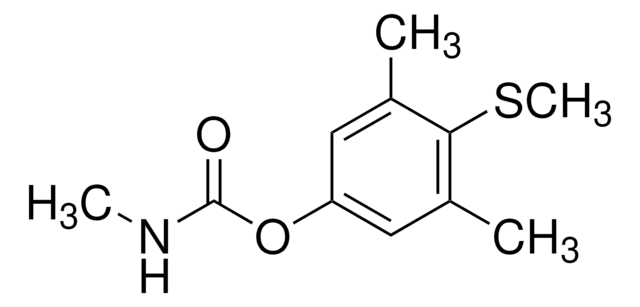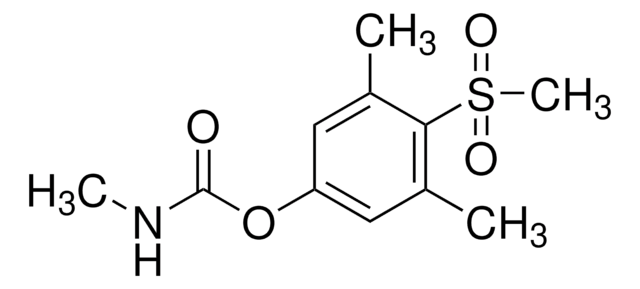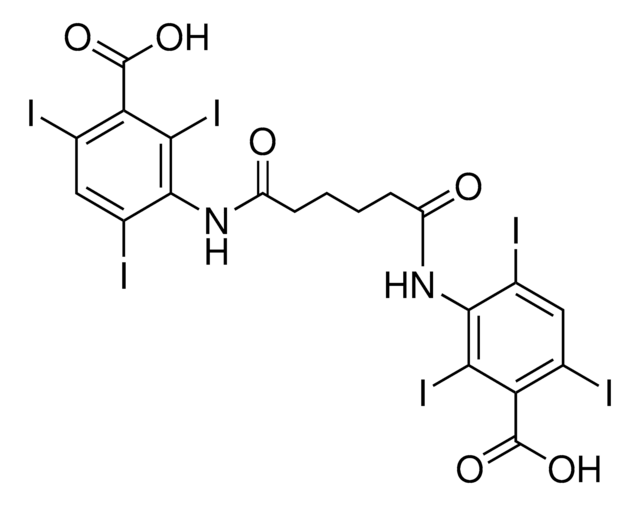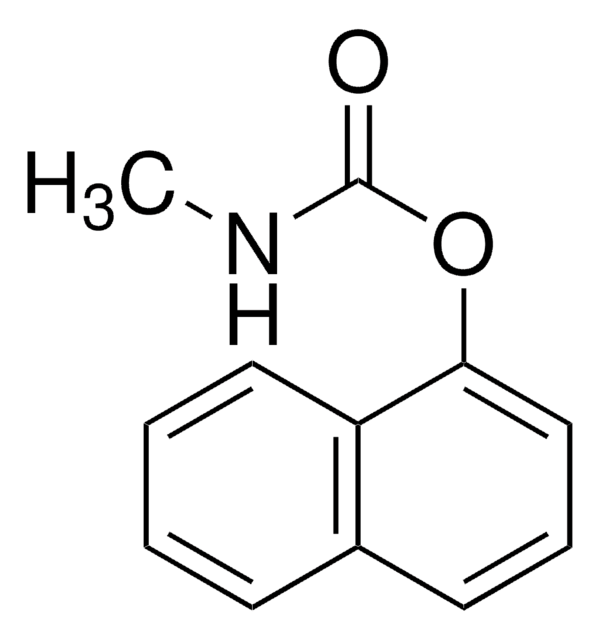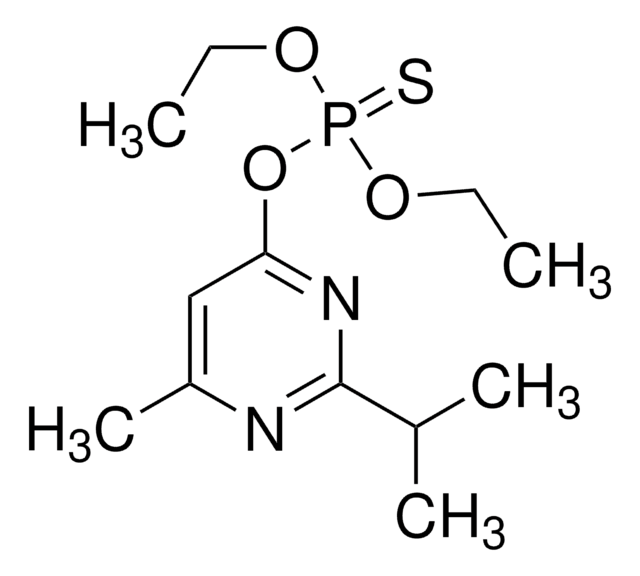31097
1-Naphthol
PESTANAL®, analytical standard
Synonyme(s) :
1-hydroxynaphthalène, α-naphthol
About This Item
Produits recommandés
Qualité
analytical standard
Niveau de qualité
Densité de vapeur
4.5 (120 °C, vs air)
Pression de vapeur
1 mmHg ( 94 °C)
Gamme de produits
PESTANAL®
Pureté
≥98.0% (GC)
Température d'inflammation spontanée
1007 °F
Durée de conservation
limited shelf life, expiry date on the label
Limite d'explosivité
5 %
Technique(s)
HPLC: suitable
gas chromatography (GC): suitable
Point d'ébullition
278-280 °C (lit.)
Pf
94-96 °C (lit.)
Application(s)
forensics and toxicology
pharmaceutical (small molecule)
Format
neat
Chaîne SMILES
Oc1cccc2ccccc12
InChI
1S/C10H8O/c11-10-7-3-5-8-4-1-2-6-9(8)10/h1-7,11H
Clé InChI
KJCVRFUGPWSIIH-UHFFFAOYSA-N
Vous recherchez des produits similaires ? Visite Guide de comparaison des produits
Description générale
Application
- In human urine by a rapid and automated method based on coupled-column liquid chromatography (LC-LC) with fluorescence detection.
- In canned fruit juices by reversed-phase high performance liquid chromatography with diode-array detection.
Informations légales
Vous ne trouvez pas le bon produit ?
Essayez notre Outil de sélection de produits.
Mention d'avertissement
Danger
Mentions de danger
Classification des risques
Acute Tox. 3 Dermal - Acute Tox. 4 Oral - Aquatic Acute 1 - Aquatic Chronic 3 - Eye Dam. 1 - Skin Irrit. 2 - Skin Sens. 1A - STOT SE 2 Oral - STOT SE 3
Organes cibles
Kidney, Respiratory system
Code de la classe de stockage
6.1C - Combustible acute toxic Cat.3 / toxic compounds or compounds which causing chronic effects
Classe de danger pour l'eau (WGK)
WGK 1
Point d'éclair (°F)
257.0 °F - closed cup
Point d'éclair (°C)
125 °C - closed cup
Équipement de protection individuelle
dust mask type N95 (US), Eyeshields, Faceshields, Gloves
Faites votre choix parmi les versions les plus récentes :
Déjà en possession de ce produit ?
Retrouvez la documentation relative aux produits que vous avez récemment achetés dans la Bibliothèque de documents.
Les clients ont également consulté
Notre équipe de scientifiques dispose d'une expérience dans tous les secteurs de la recherche, notamment en sciences de la vie, science des matériaux, synthèse chimique, chromatographie, analyse et dans de nombreux autres domaines..
Contacter notre Service technique
